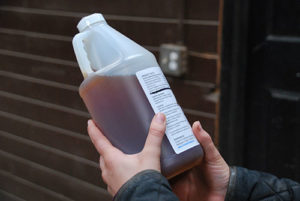Fall and Winter Bring Forage Risks
Now that we’ve had our first frost in Central Kentucky (and many areas have had more than that), your pastures might be higher in carbohydrates and thus more dangerous for laminitic and/or metabolically challenged horses (such as Cushingoid
- Topics: Article, Pasture & Forage Management
Now that we’ve had our first frost in Central Kentucky (and many areas have had more than that), your pastures might be higher in carbohydrates and thus more dangerous for laminitic and/or metabolically challenged horses (such as Cushingoid ones). And while weather plays a significant role in forage carbohydrate levels, high levels often trace back to grass species that were bred for improved production (via higher carbs) in cattle. At the first Equine Forage: Risks and Rewards Seminar and Summit held Oct. 22-23 at Rutgers University, Katy Watts, BS, director of research for Rocky Mountain Research and Consulting, Inc., explained what factors cause carbohydrate accumulation in forages and how owners can manage their horses and pastures to keep carbs lower for horses that can’t tolerate high-carb diets.
“A horse is not a cow, so why do we feed them the same?” asked Watts. Unfortunately, she says, many of the “improved” grasses in pastures were designed to maximize cattle weight gain and milk production and aren’t good for horses, particularly horses that are laminitic and/or metabolically challenged. The high levels of carbohydrates can cause colic and laminitis in some horses.
“Forage scientists confer with dairy and sheep producers all the time, but when I went to see Dr. Jerry Chatterton (PhD, Research Leader of the USDA Forage and Range Research Laboratory Leader) in Utah, he told me, ‘You are the first horse person ever to sit in that chair,’ ” Watts said. “The dairy industry has directed the forage industry by default.” She noted that higher-carb forages generate better production in cattle, and they tend to be hardier and more palatable than lower-carb versions.
Until lower-carb varieties of pasture plants are developed, she said, horse owners need to do three things:
- Understand how sugar is formed in grass;
- Recognize the effects of environmental conditions on non-structural carbohydrates (NSC, the storage carbohydrates of plants that can be dangerous to horses in large amounts) content of forage; and
- Use this information to make better decisions on hay selection, pasture management, and “safer” times to graze.
 |  |
Just because forage looks bad doesn’t mean it can’t be rich in sugars. TheHorse.com is home to thousands of free articles about horse health care. In order to access some of our exclusive free content, you must be signed into TheHorse.com. Already have an account? Stay on top of the most recent Horse Health news with "*" indicates required fields | |

















